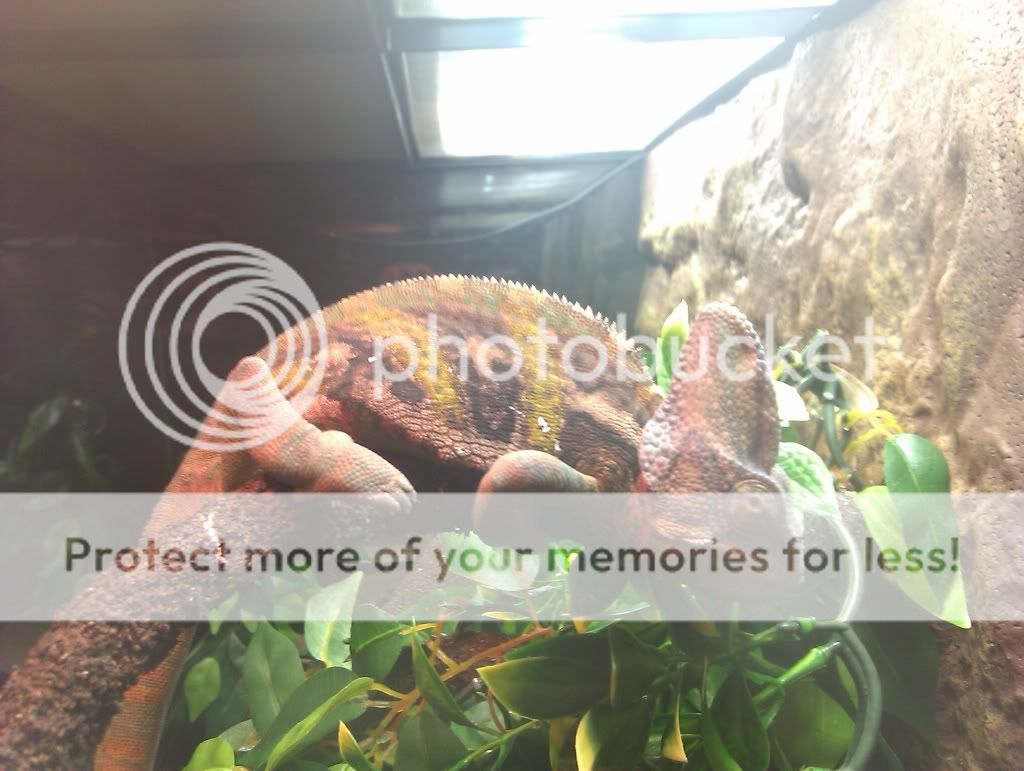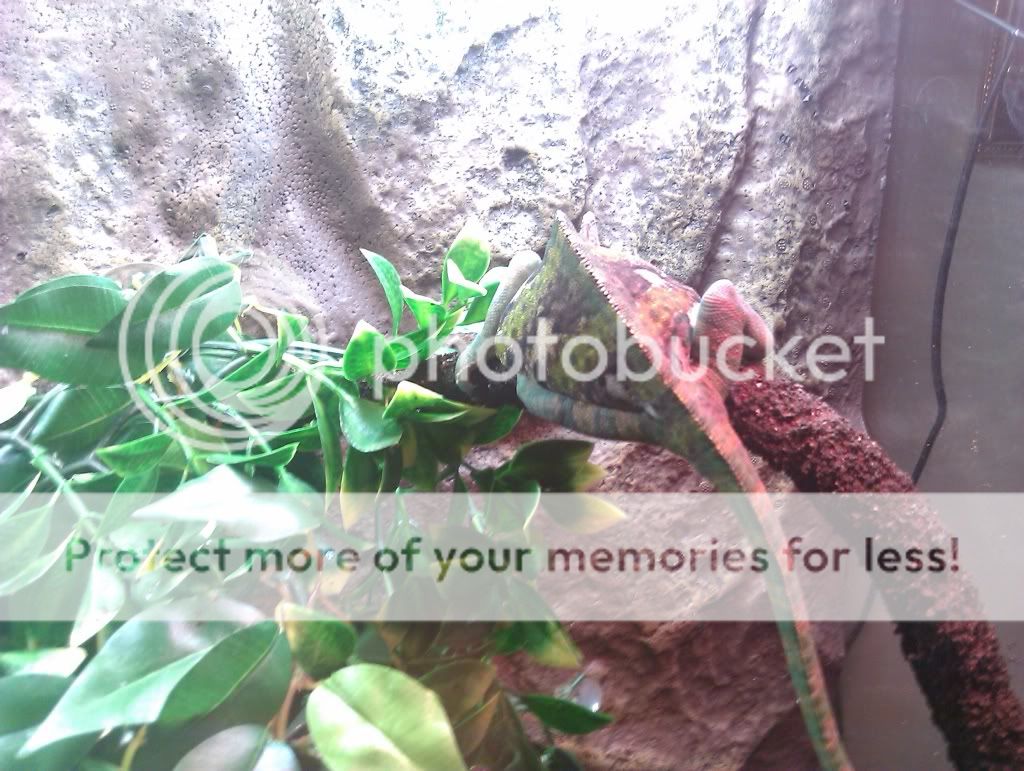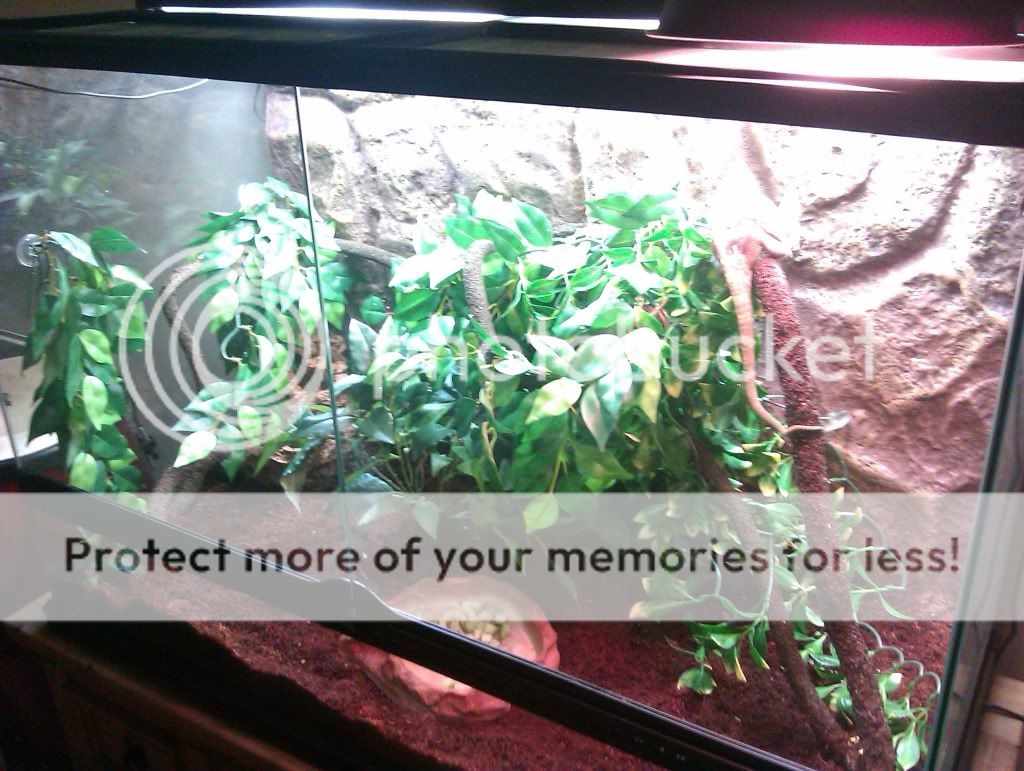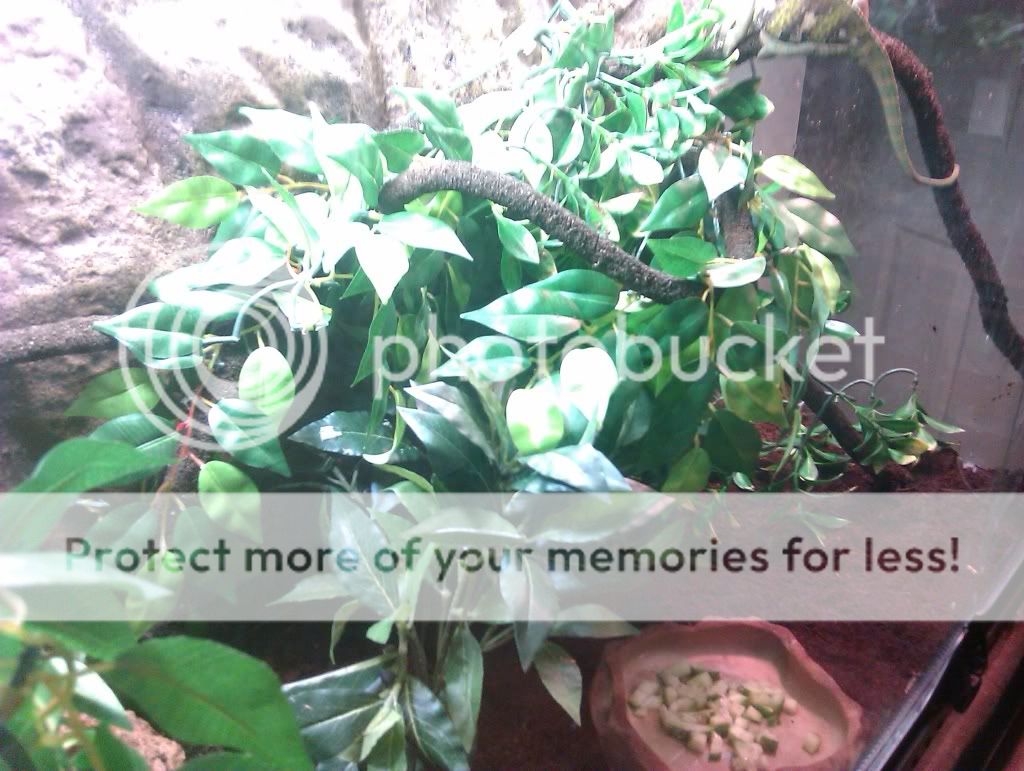Ive had my veiled since the end of october and he has been fine, but recently he has started shaking abit when he walks and he has gone a horrible colour, im scared and dont want him to die. I feed him locusts and waxworms and cucumber. I use calcium and nutrition powder like once a week or something and sprinkle it on his locusts. I dont have a clue whats wrong with him. his heat lamp comes on at seven in the morning and it goes off at 12 in the afternoon for an hour and at 5 oclock for an hour just so hes cool for abit, is this wrong? should i leave it on for a full 12 hours? these are some pics of his tank and him. Any advice would be much appreciated!!!!







